The Railway reaches Bedford
The first railway to reach Bedford was the branch from the London & Birmingham Railway at Bletchley. It opened in November 1846 and is still operating today. The Midland Railway Company opened a line between Leicester and Hitchin, via Bedford, which connected to the Great Northern railway to London in 1857. The extension from Bedford to London (St Pancras) (now the main line) was finally opened in 1868.
The Bedford to Northampton Line – early plans
There were four schemes proposed to build a railway between Bedford and Northampton; two in 1845, one in 1864 and the final, successful one in 1872. The first scheme in 1845 proposed by the ‘Northampton, Bedford & Cambridge Railway’ failed to raise sufficient funds, and the company collapsed. The 1864 scheme, proposed by the East and West Junction Railway, was dropped because of the demands made by owners of the property it would be built on. Another scheme was proposed by the Bedford, Northampton and Leamington Railway.
In 1865, the Act of Parliament granting powers to build the railway was passed, allowing the Bedford and Northampton Railway to build the line. Slow progress in achieving the funding and starting construction meant that further Acts were needed in 1866 and 1867.
Construction
The railway was designed by Charles Liddell, a pupil of George Stephenson (known as ‘The Father of the Railways’) and who was the Chief Engineer of the Midland Railway. The construction was promoted by Colonel Higgins of Picts Hill, who became chairman of the railway company, and Mr Charles Longuet-Higgins of Turvey Abbey. Mr Longuet-Higgins built a row of cottages for the navvies building the railway, known as Bakers Close, and Colonel Higgins provided a Working Men’s Room with magazines and newspapers. Construction was undertaken by Edwin Clark Punchard & Co, an engineering company. Although there were delays following problems with constructing the embankments and cuttings, the railway opened on 10th June 1872.
As was traditional, the opening was celebrated with a dinner in the Assembly Rooms in Bedford, hosted by Colonel Higgins; Charles Longuet-Higgins and Rev G F W Munby of Turvey attended.
Route
The railway left the by-then main London to Leicester line at Oakley, north of Bedford, and followed a route between Stevington and Bromham to the first station at Turvey. It then ran towards Newton Blossomville and Clifton Reynes, with stations at Olney and Piddington before terminating at St John’s in Northampton.
The railway entered the parish on an embankment around the Picts Hill Estate – the route survives as a public footpath. It crossed the main Bedford-Northampton road via a single arch stone bridge to the station at Turvey – about a mile from the centre of the village, at what is now the settlement of Station End. It continued by Elderswell Farm, and through a cutting with two overbridges, still standing, passing to the south of Turvey village and on towards Newton Blossomville.
Why was the station constructed so far from the centre of Turvey? Rev. Munby suggested in ‘Former Days at Turvey’ (1908) that this was contrived by Colonel Higgins, who lived at Picts Hill House. Whist this may have been part of the reason, the gradient of the route probably dictated the choice of site. The station at Turvey had two platforms and a goods siding, with a signal box to the west of the station; it would not have been easy to construct these in the cutting where the land rises to the south of the village, and to do so would have increased costs.
There were a number of proposals for extensions to the route, and additional stations, but none were ever built.
The Train Service
Responsibility for the line was transferred to the Midland Railway on 31 December 1865 which became part of the London, Midland & Scottish Railway in 1923.
The passenger train service was initially five trains per day each way, with no Sunday service. This was increased to six in 1922 and seven in 1938. Special services were run when there was racing at Towcester racecourse. The trains were usually hauled by Class 3F and 4F locomotives; occasionally Black Fives and Class 8Fs were used. In later years, a smaller Ivatt 2-6-2T locomotive was used, hauling two coaches. The locos were based at Bedford, so the engine was always at the Bedford end of the train. This meant that the services were ‘pushed’ to Northampton and ‘pulled’ to Bedford. Freight was also carried, including ‘banana specials’ carrying fruit from Avonmouth to London.
The journey from Turvey to Bedford took 12 minutes, to Olney 10 minutes and to Northampton around half an hour.
The line was busiest in the war years. In August 1940 one of the lines between Turvey and Olney was closed and used as a siding to store war materials. After the war, traffic declined, and in an attempt to revitalise the route, diesel railcars were introduced with an increase in the service frequency. This was not successful, and the service was finally withdrawn in 1962, with the last train running on 3rd March.
Since Closure
Although the track has been taken up, the formation is still clearly visible, and part is a public footpath. Part of the track around the Picts Hill Estate was used for the Turvey and Stevington Railway (photos) in the early 1980s. This was a private 2ft gauge line, running for about ¾ mile, and was closed in 2014. The station was converted to offices, and the yard and station area used for storage.
Bibliography
Cockman F.G. The Railway Age in Bedfordshire (The Book Castle 1994)
Oppitz L. Chiltern Railways Remembered ( Countryside Books 1991)

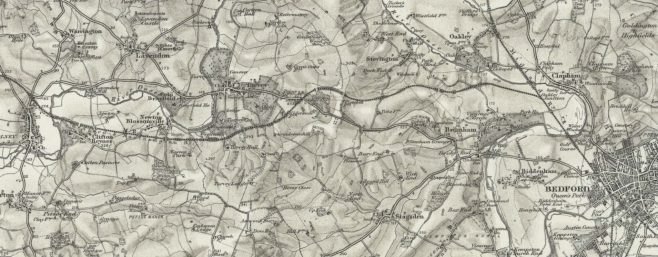
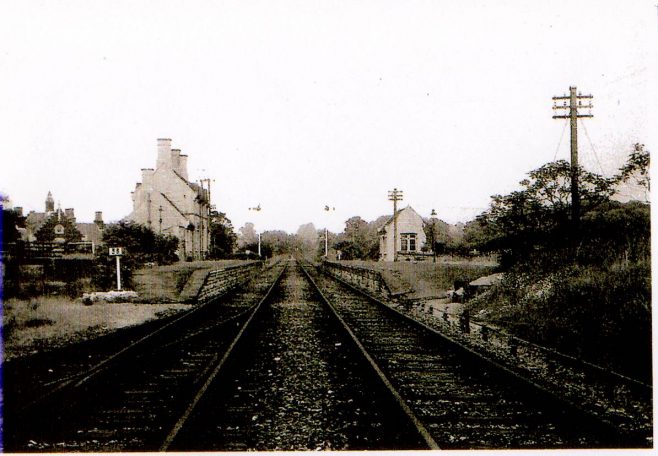
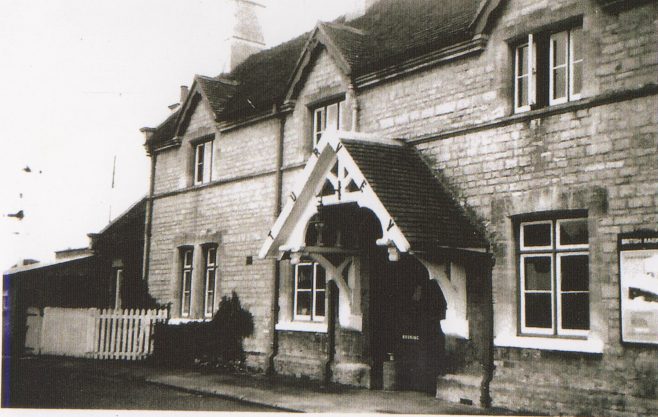
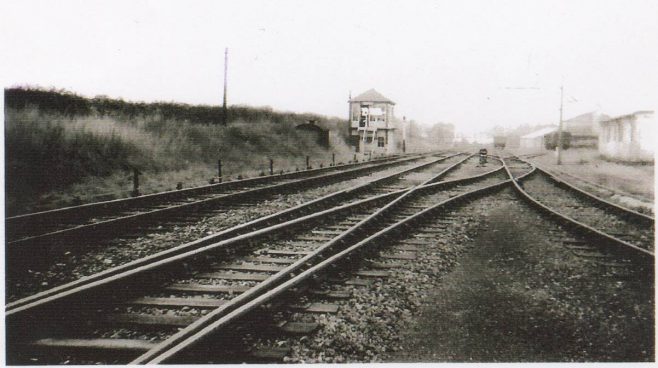

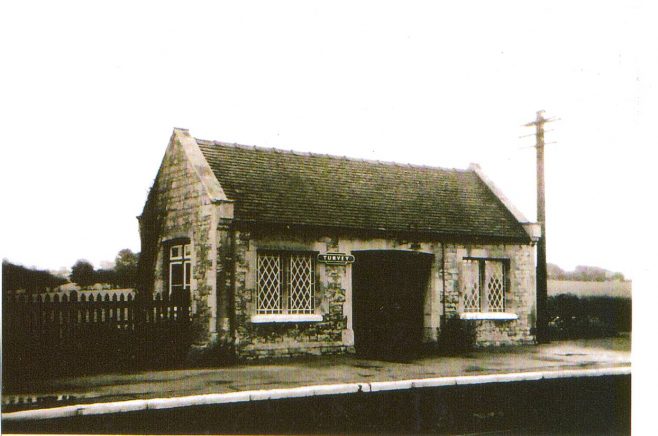
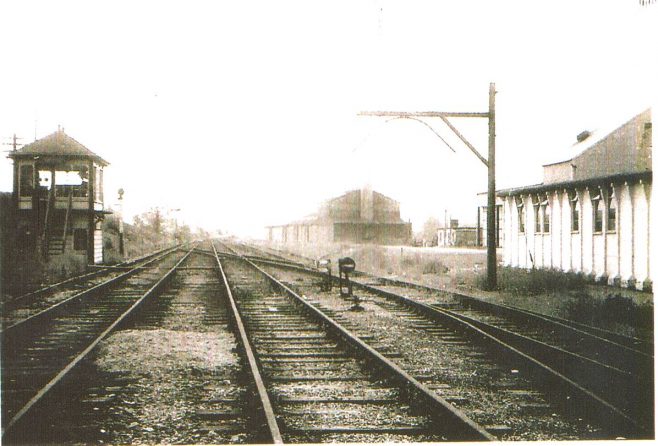
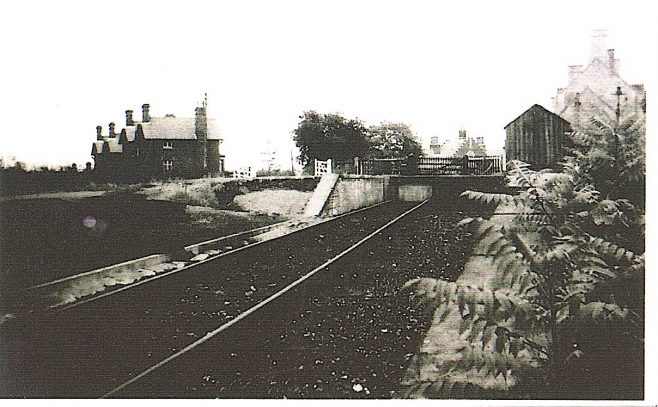
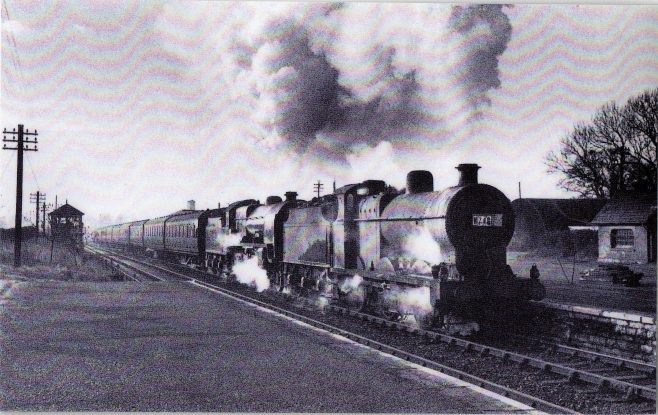
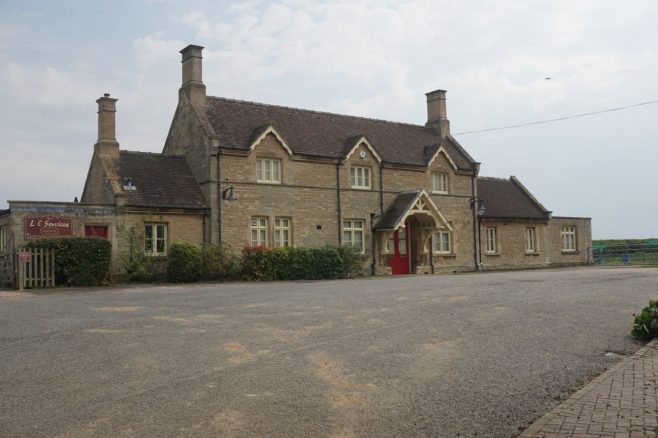




No Comments
Add a comment about this page